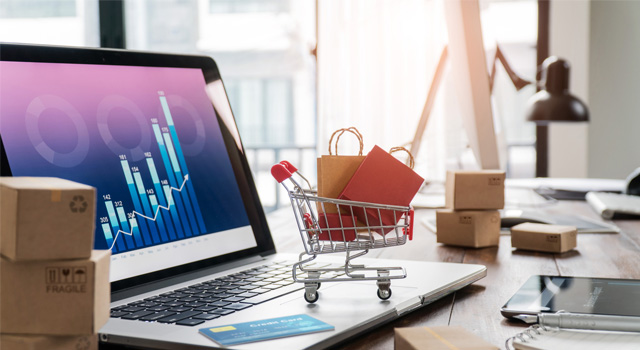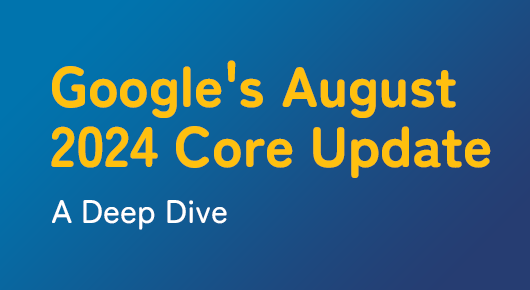eCommerce has gained extreme momentum in the past five years and is showing no signs of slowing down. According to eMarketer, for the first time in history, over 50% of retail sales in China will come from eCommerce in 2021. This makes China the first country in the world to complete more online sales than offline. Given how the pandemic has made monumental shifts to the way customers transact online, other countries may soon find themselves at the same turning point. So how do businesses prepare for an eCommerce first world? We’ve outlined the top five eCommerce trends for 2021 and focus areas for your business.
1. Top five eCommerce five eCommerce trends in 2021 – Loyalty Is Paramount
There is an old rule called the Pareto Principle that suggests that 80% of a company’s sales come from 20% of its customers. The rule also highlights that if you focus on acquiring and nurturing more customers in the top 20%, your sales and profits should skyrocket. And yet, when it comes to nurturing customers, people often fall into the trap of treating their existing customers in the same way as their prospective customers. Using performance marketing channels to guide a customer through your conversion funnel from awareness to consideration to conversion, is essential for a new customer growth but once this person has completed their purchase, they should move into a specific funnel for existing customers. This funnel should be based on utilising the data and information you have on hand about these customers and communicating primarily through channels you own. Only when you have fully leveraged your owned channels or an existing customer becomes disengaged with these owned channels, should you start to utilise paid marketing strategies to engage with this audience. You shouldn’t be paying to acquire an existing customer in the same way that you pay to find a new one.
2. Top five eCommerce trends in 2021 – Free, Fast & Sustainable Shipping
Despite countless number of customer surveys which indicate free and fast shipping being key priorities for customers when they shop online, brands are still hesitant to implement these strategies. According to Global Web Index, 64% of consumers want their orders shipped for free. As eCommerce becomes the main channel to transact in, brands that don’t get on board with offering free and fast shipping will lose customers. Rather than deliberating if you should offer free shipping, start focussing on how you can utilise this strategy in a profitable way for your business. Ensure you have free shipping thresholds in place but make them low. You want to just cover your costs and not deter new customers who are unfamiliar with your brand. Offer paid express shipping for customers who want it now (and most do) and make this an affordable option. You’ll likely find more of your customers will end up paying $3 to $5 for express shipping, then wait an additional week to 10 days for standard shipping. And make fulfilment an exciting part of the customer journey, that aligns with your brand values. Sustainable shopping bags that are made from recycled materials and can double as returns bags are great. Remember that customers think of shipping as very different to discounts, so while you might think offering a 10% discount instead of free shipping will be viewed the same by your target audience, they don’t.
3. Top five eCommerce trends in 2021 – Build A Memorable Brand
Research from Accenture shows that half of eCommerce sales globally occur on marketplaces like Amazon, Tmall and eBay. Consumers who utilise these platforms search for items that will provide a solution to their problem and are looking at attributes like price, availability and reviews to help them make their decision. The majority of these searches are unbranded. This is why brand building is paramount in an eCommerce world. Your brand and product need to stand out immediately in a crowded category page that can contain hundreds of other feasible options. Consumers need to know your brand and understand what it stands for. Be distinctive. They need to trust that your brand has exactly what they need to solve their problem and that it’s the best or only solution. Be it the need to provide a safe home for their family by purchasing the best cleaning products, the need to present an idealized version of themselves to society by purchasing the latest shoes, the need for human connection through providing an occasion to socialise with a bottle of wine. These are just a few of many examples available for products that have many accessible alternatives. You need to build a brand so powerful and so differentiated in market, that they seek you out specifically.
4. Top five eCommerce trends in 2021 – Show (Don’t Tell) Through Augmented Reality
Augmented Reality (AR) is evolving at a rapid rate. Social media platforms like Snapchat and TikTok are renowned for their unique use of AR, allowing users to transform their hair, eye colour, clothing and so much more. And yet, up until recently, most eCommerce websites have failed to integrate this into their offering. According to WooCommerce, 35% of people say they would be shopping online more if they could virtually try on a product before buying it. With the focus historically on bricks and mortar stores, it’s understandable as to why more retailers haven’t focussed on integrating Augmented Reality into their websites. However, with COVID accelerating the shift to online shopping, retailers who integrate AR into their offering now stand to benefit immensely from an increase in user engagement, higher conversion rates and lower returns, as customers are far more educated on their purchase before checking out.
5. Top five eCommerce trends in 2021 – Personalised One-To-One Experiences
Machine learning is evolving so rapidly and with the vast array of data points captured in today’s age, it’s possible to create truly individualised, unique and valuable one-to-one shopping experiences online. People expect to be able to easily find what they’re looking for online and this extends to product discovery as well. Social media algorithms are expertly attuned to serving us content that we’ll continue to engage with and as a result, customers expect any recommended products to be just as tailored and relevant to what they might discover scrolling through their Instagram feed. Be sure that your recommendation engine is set up correctly and follows logical rules to recommend products that have the most value for your customers. For example, make sure your cross-selling logical products, and not continuously serving a high converting but irrelevant, gift with purchase offer.
A selection of Media Merchants eCommerce website builds include:
MM build: Designer Appliances e-comm
MM build: Good Price Pharmacy e-comm
MM build: Retravision e-comm
MM build: Midas e-comm









